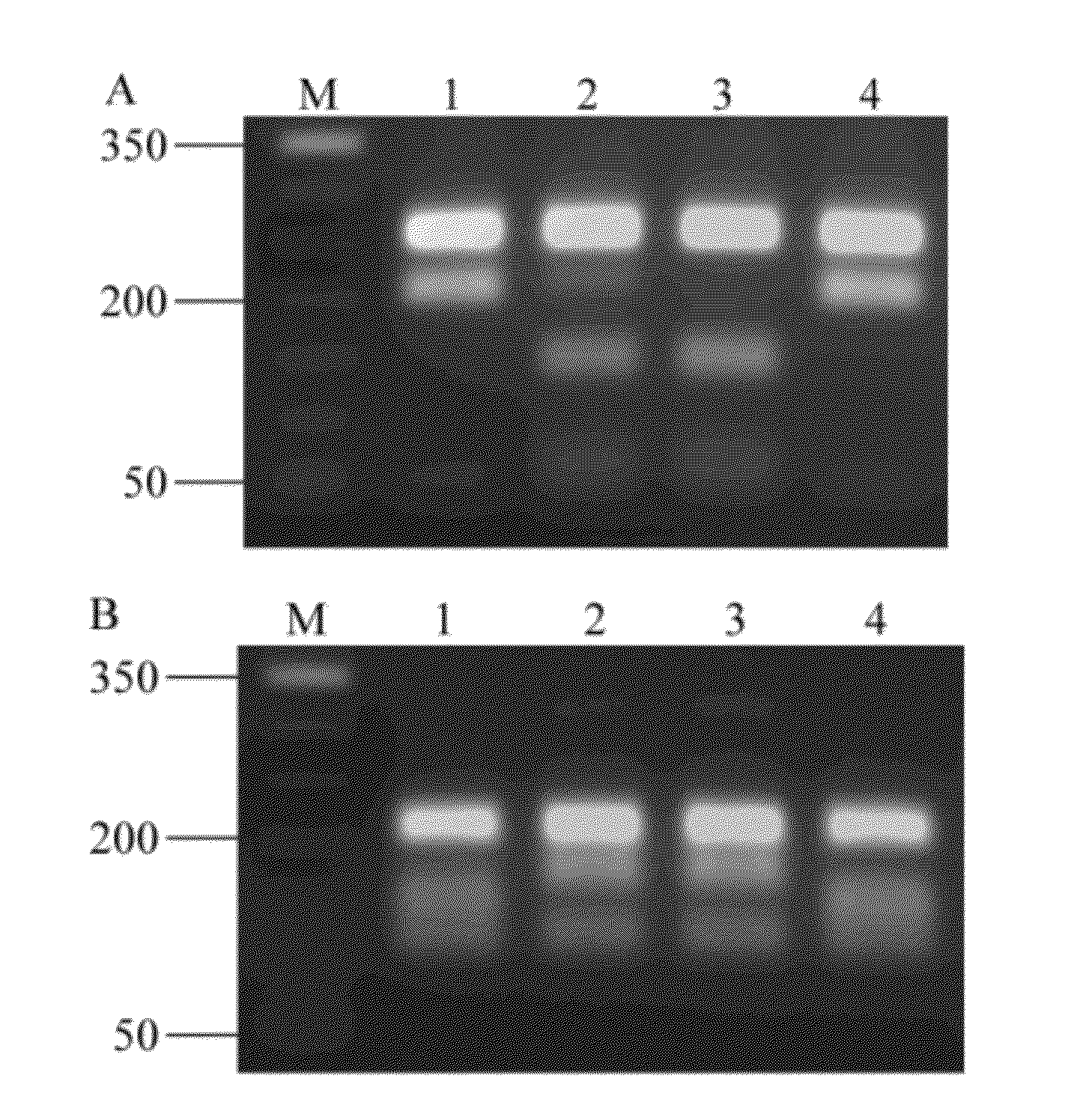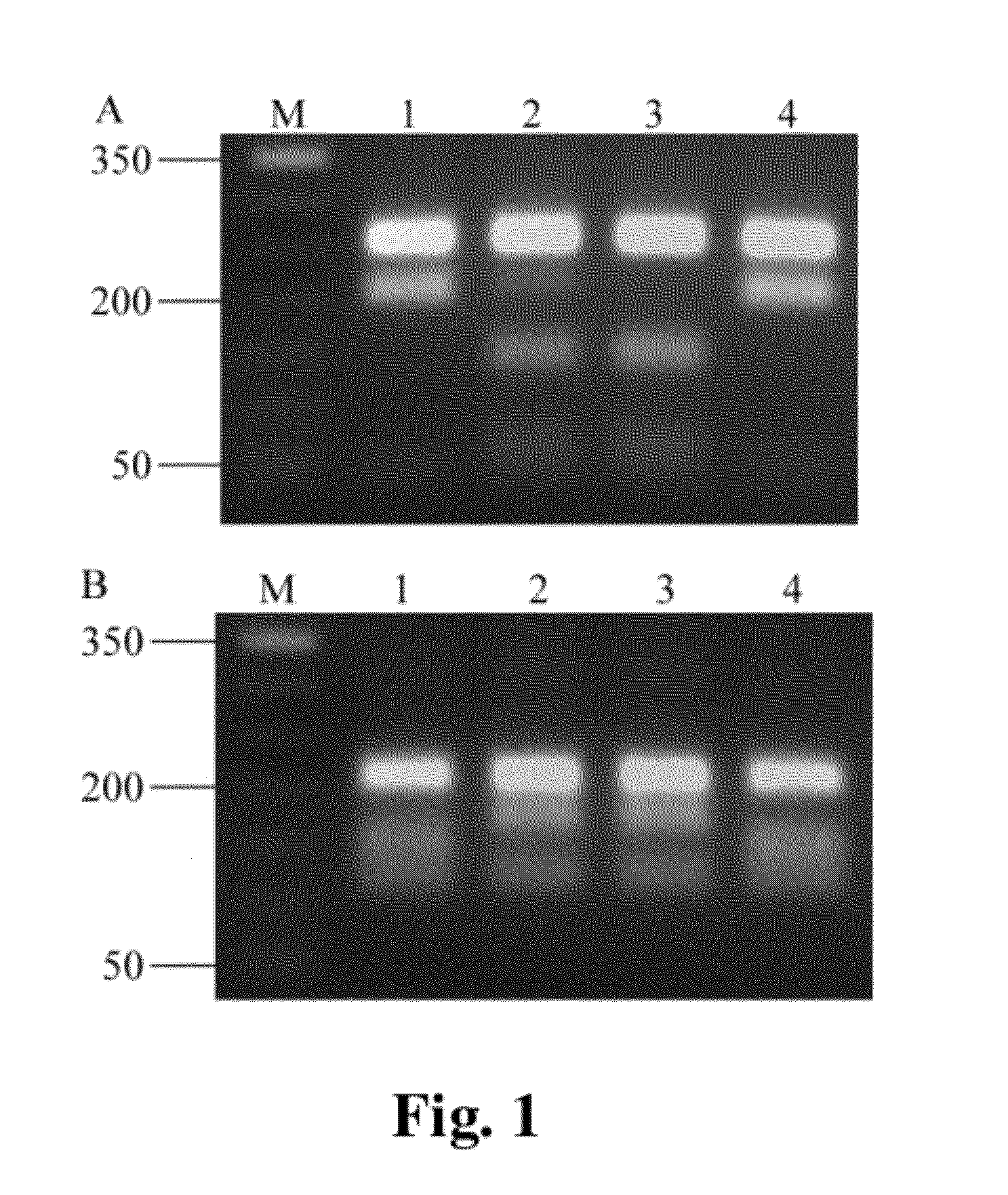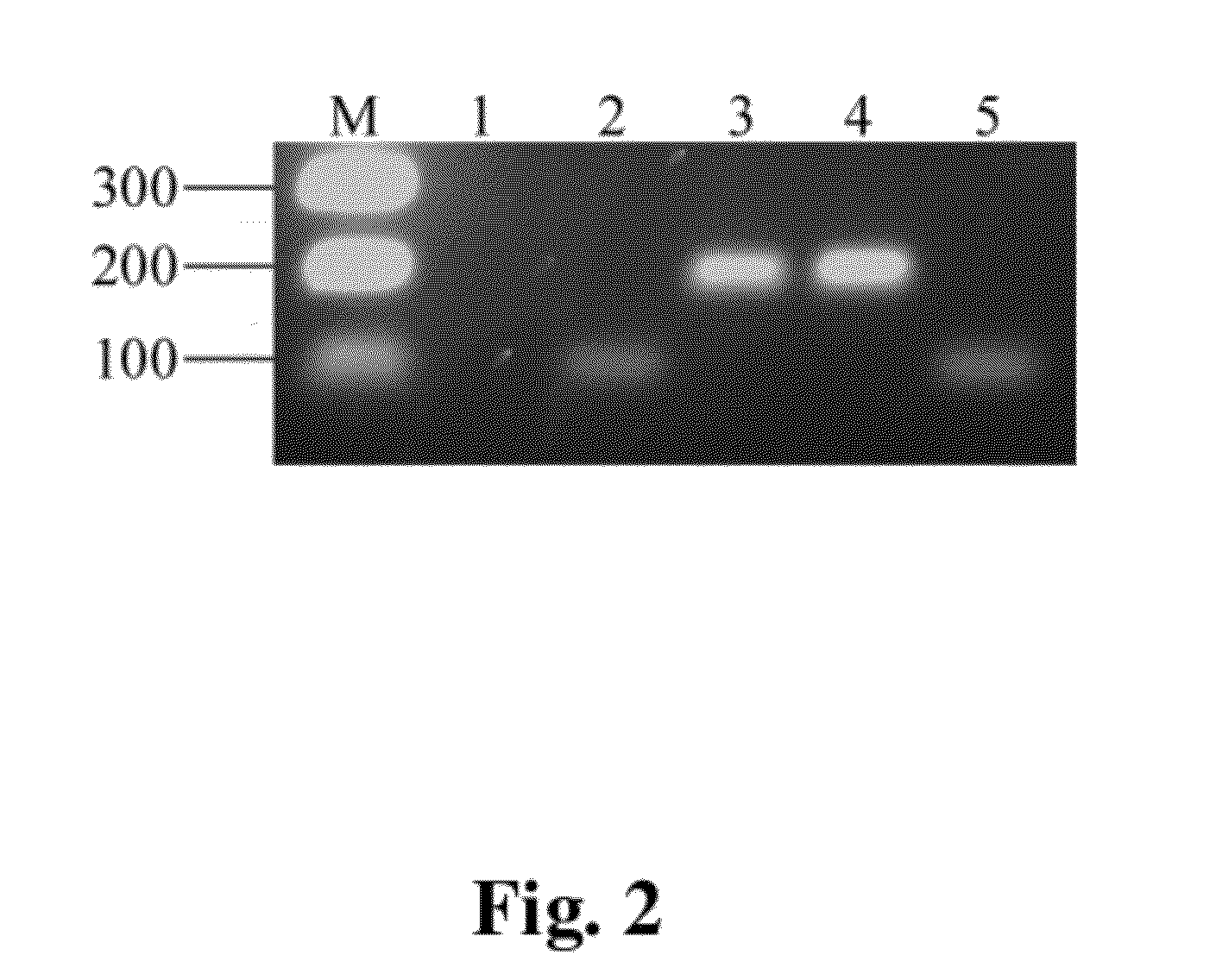Vaccination of Sex Reversed Hybrid Tilapia (Oreochromis niloticus X O. aureus) With an Inactivated Vibrio vulnificus Vaccine
- Summary
- Abstract
- Description
- Claims
- Application Information
AI Technical Summary
Benefits of technology
Problems solved by technology
Method used
Image
Examples
example 1
[0040]Our laboratory was contacted in December 2009 by a North American hybrid tilapia producer experiencing a significant disease outbreak on a commercial water reuse aquaculture facility. Six dead fish were shipped to our laboratory and fish were necropsied using standard procedures. Aseptically acquired samples of the anterior kidney and brain were inoculated onto sheep blood agar (SBA) and incubated at 28° C. for 24-72 h. Both organs sampled from all six fish yielded pure cultures of a Gram-negative bacterium. The isolates were identified as V. vulnificus by fatty acid methyl ester analysis (Shoemaker et al. 2005. J. Aquatic Animal Health 17:267-274) and API 20E test (bioMérieux, Inc., Durham, N.C., USA). One isolate, ARS-1 Br-09 (deposited in the USDA Agricultural Research Service culture collection (NRRL) under accession number B-50360), was chosen for subsequent characterization and used in the infectivity and vaccine experiments.
[0041]Three additional V. vulnificus i...
example 2
Molecular Characterization
[0043]Total DNA was extracted from V. vulnificus isolates using a DNeasy® Blood and Tissue kit (Qiagen, Valencia, Calif., USA) according to the manufacturer's protocol for Gram-negative bacteria. The 16S rRNA genotype of each isolate was determined as described by Nilsson et al. (supra), with minor modifications. A 492-bp segment of the 16S rRNA gene was amplified by PCR from each isolate using primers UFUL and URUL (Nilsson et al., supra; Avaniss-Aghajani et al. 1996. J. Clin. Microbiol. 34:98-102). PCR was performed using HotStarTaq® Plus Master Mix kit (Qiagen) and the final concentration of each component in the 20-μL reactions were as follows: 1× HotStarTaq Plus Master Mix, 0.3 μM each primer (UFUL, URUL), 1× CoralLoad Concentrate, and 50 ng total DNA. PCR amplification was performed with a Primus HTD thermocycler (MWG AG Biotech, Ebersberg, Germany) and the following cycling protocol was used: one cycle of 5 min at 95° C., 30 s at 57° C., 30 s at 72° ...
example 3
Infectivity Trials with Hybrid Tilapia
[0049]Sex reversed hybrid tilapia (mean weight of 6.7 g) were obtained as fry from AQUASAFRA, Inc. (Bradenton, Fla., USA) and used as experimental animals. For trials 1 and 2, fish were stocked at approximately 50 fish in each of two 200 L aquarium at time of vaccination. For trials 3 and 4, four groups of 50 fish each were utilized (see vaccine and vaccination below for details). The fish were maintained in a flow through (0.5 L / min) system using de-chlorinated municipal water heated to 28±2° C. until challenge (see below).
[0050]Infectivity trials were conducted with 20-30 hybrid tilapia held in 57 L aquaria maintained on flow through freshwater at 28±2° C. Fish were intraperitoneally (IP) injected with V. vulnificus (ARS-1 Br-09) grown in tryptic soy broth supplemented with 0.5% sodium chloride (TSB+NaCl) in 50 ml culture tubes at 28° C. for 24 h. The doses administered ranged from 2.2×106 to 3.0×107 colony-forming units (CFU) / fish in four exp...
PUM
| Property | Measurement | Unit |
|---|---|---|
| Fraction | aaaaa | aaaaa |
| Fraction | aaaaa | aaaaa |
| Fraction | aaaaa | aaaaa |
Abstract
Description
Claims
Application Information
 Login to View More
Login to View More - R&D
- Intellectual Property
- Life Sciences
- Materials
- Tech Scout
- Unparalleled Data Quality
- Higher Quality Content
- 60% Fewer Hallucinations
Browse by: Latest US Patents, China's latest patents, Technical Efficacy Thesaurus, Application Domain, Technology Topic, Popular Technical Reports.
© 2025 PatSnap. All rights reserved.Legal|Privacy policy|Modern Slavery Act Transparency Statement|Sitemap|About US| Contact US: help@patsnap.com



